Features of lighting of Bridges as in the case of the Volgograd Bridge
Uliana Vinogradova, head of IntiLED lighting design department
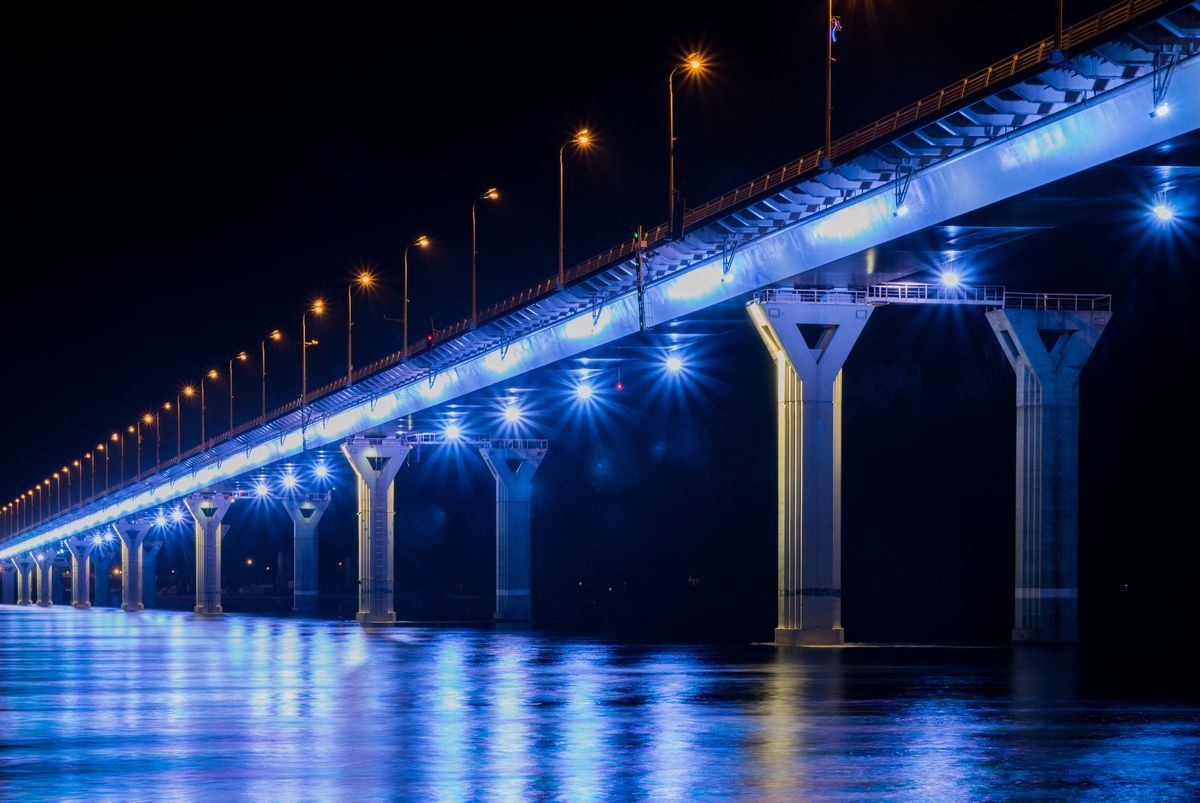
Every lighting designer or lighting technician knows that designing illumination for a bridge is a complex and comprehensive task. The first thing to take into account is the type of structure. Bridges are distinguished by the throughput load (motor, pedestrian, railway, etc.), the beam scheme (beam, brace, combined); there are also movable bridges. It should be noted that red and green colors are forbidden for illumination of bridges since they are used for signaling in ship navigation. Moreover, it is necessary to exclude the blinding effect for people driving vehicles both on the bridge and under the bridge (if the water body is navigable). There are increased requirements imposed on lighting equipment in terms of vibration resistance, resistance to climatic factors, i.e. temperature, wind, and aggressive media. There are many restrictions for the place of installation of equipment, including the integrity of the truss structure, which shall not be disrupted, thus, luminaires shall be secured using specially designed brackets. If the lighting design is carried out at the design stage of the very bridge, it is possible to envisage embedded elements for securing luminaires, as well as to consider concealed installation of equipment, wiring, and accessories.
In the case of the Volgograd Bridge, we, unfortunately, were deprived of the advantages of designing a new bridge, since it had already been built and notorious for its plasticity so it received the name “Dancing Bridge” among the people.
The Volgograd Bridge is one of the largest objects of transport infrastructure of national importance. The bridge is a part of the complex of road structures of the bridgework across the Volga River and is designed to provide relieving of federal roads, highways of the city, and access to the republics of Central Asia, the cities of Astrakhan and Saratov. The bridge is 1.2 km long; the span length is 150 m on average. Each span is divided by projecting consoles.
The original terms of reference did not envisage any restrictions: neither in terms of budget nor in terms of installation, only the customer’s desire to realize the media history.

After discussing the preliminary sketches of the concept with the customer, additional information and revised terms of reference, as well as an understanding of where to/not to install luminaires, the budget has decreased. It was necessary to preserve the color solution and to achieve the maximum uniformity of illumination of the lateral side of the bridge. Securing equipment was allowed only in the places of installation of the bridge lighting poles, on outboard brackets attached to the fencing structures.
The IntiLED Lighting Design Department prepared photorealistic visualization in several modes: monochrome white, monochrome color, and gradient color changing for special occasions, weekends and holidays.
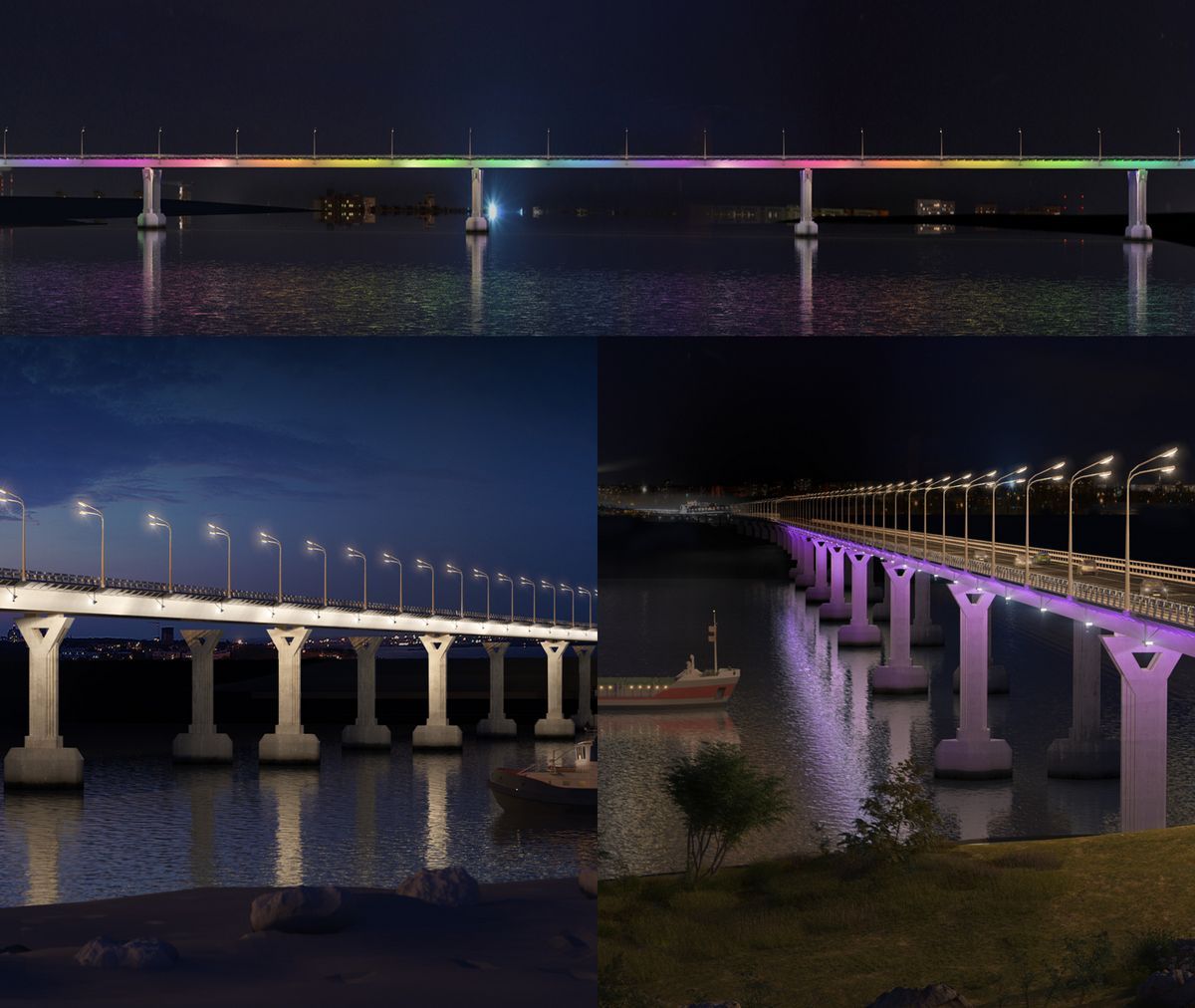
To implement the concept, it was decided to use powerful RGBW spotlights with narrow optics of 10° with cross targeting, and to illuminate bridge surfaces that remained dark under the brackets using linear RGBW luminaires with a wide beam extension angle of 120°, for the maximum uniformity of illumination of the bridge
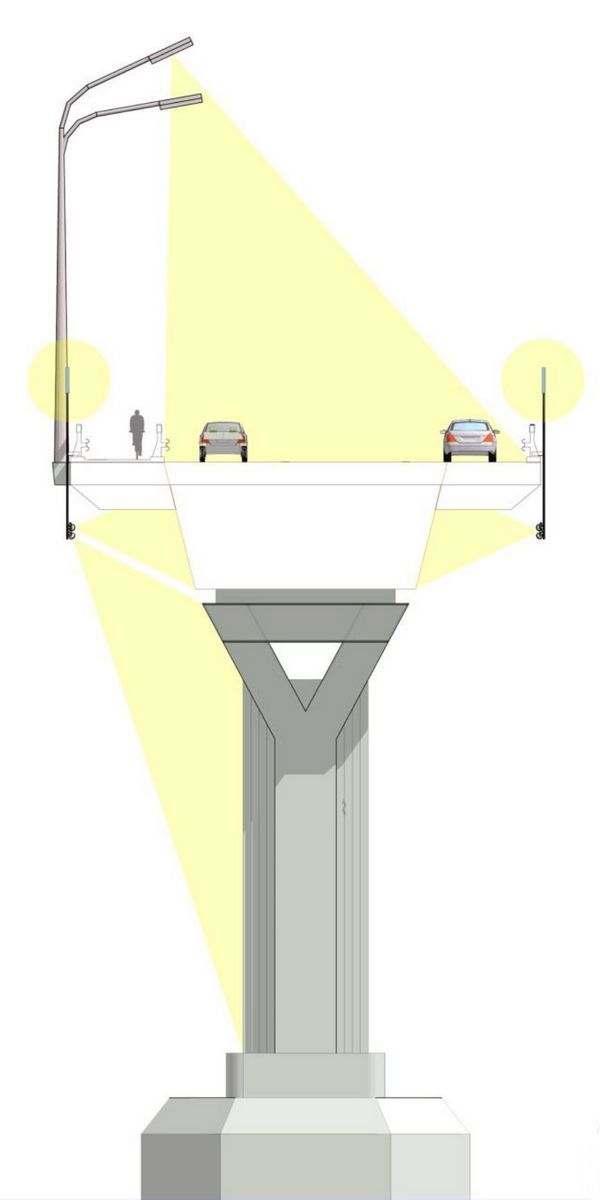
The pillars of the bridge were illuminated from the same brackets using spotlights of white neutral color (4000K) with 30-degree optics. The same arrangement of luminaires
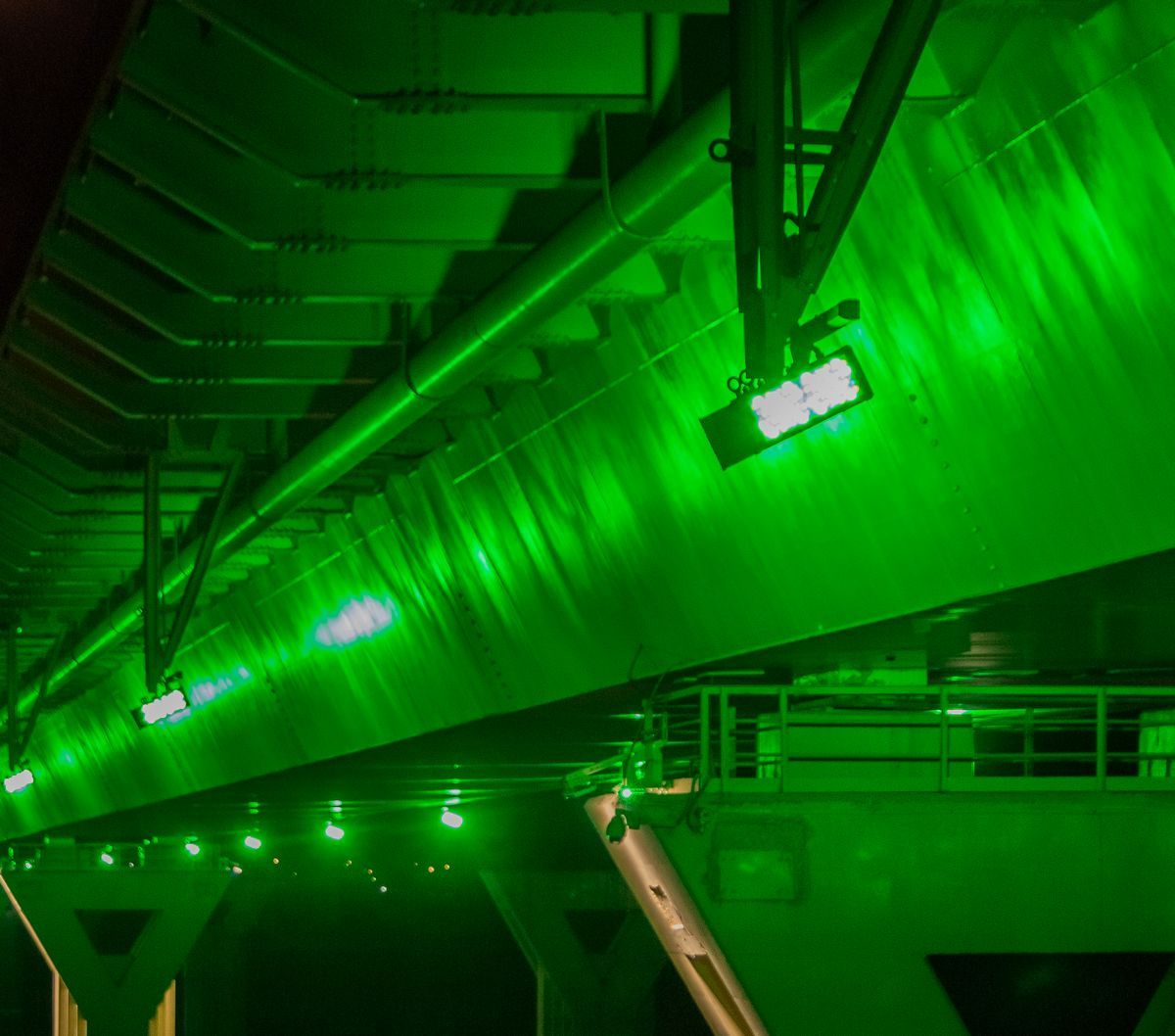
was adopted after the light calculations and allowed to save a lot on equipment, to achieve uniformity on the surface with a complex (combined) type of reflection, the specular-diffuse one.
However, we had concerns caused by the complex nature of the reflection of the surface, the high length of spans, and the possible discrepancy between the drawings and the actual situation on the site. The first full-scale modeling was carried out to determine the distance of the bracket overhang. The Svetosila Company has developed a special bracket 2,130 mm long with the overhang down from the bridge and places for securing three luminaires with two degrees of freedom. This allowed rotating spotlights both along the horizontal axis and around its own one,
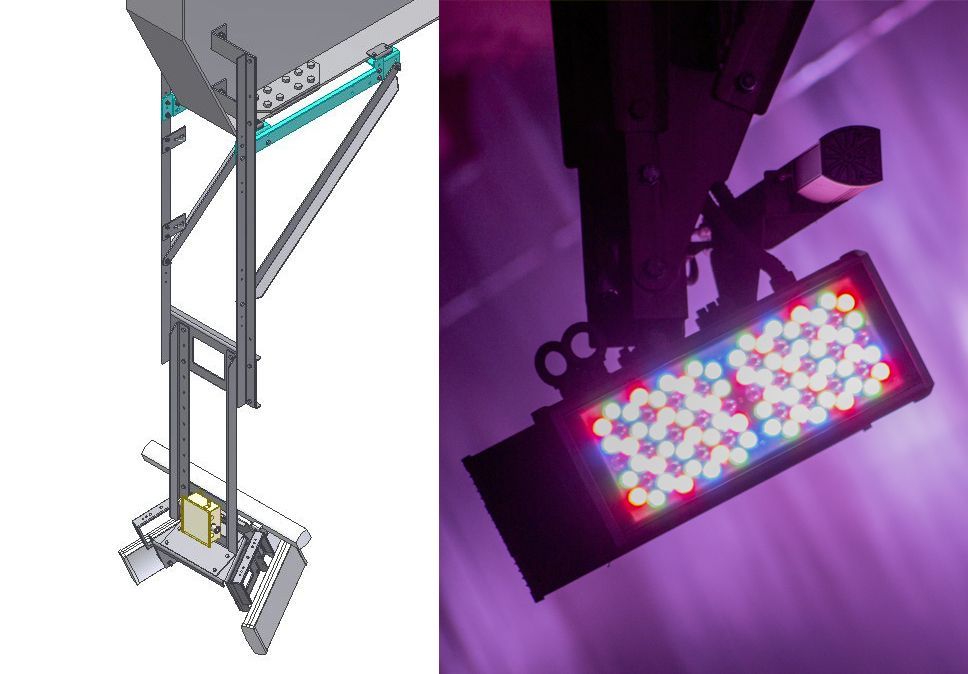
as well as aiming the light beam according to the calculation.
The further full-scale modeling took place with the installation of luminaires on two brackets on the site. However, due to incorrect targeting of luminaires with narrow optics, light spots appeared on the bridge surface.
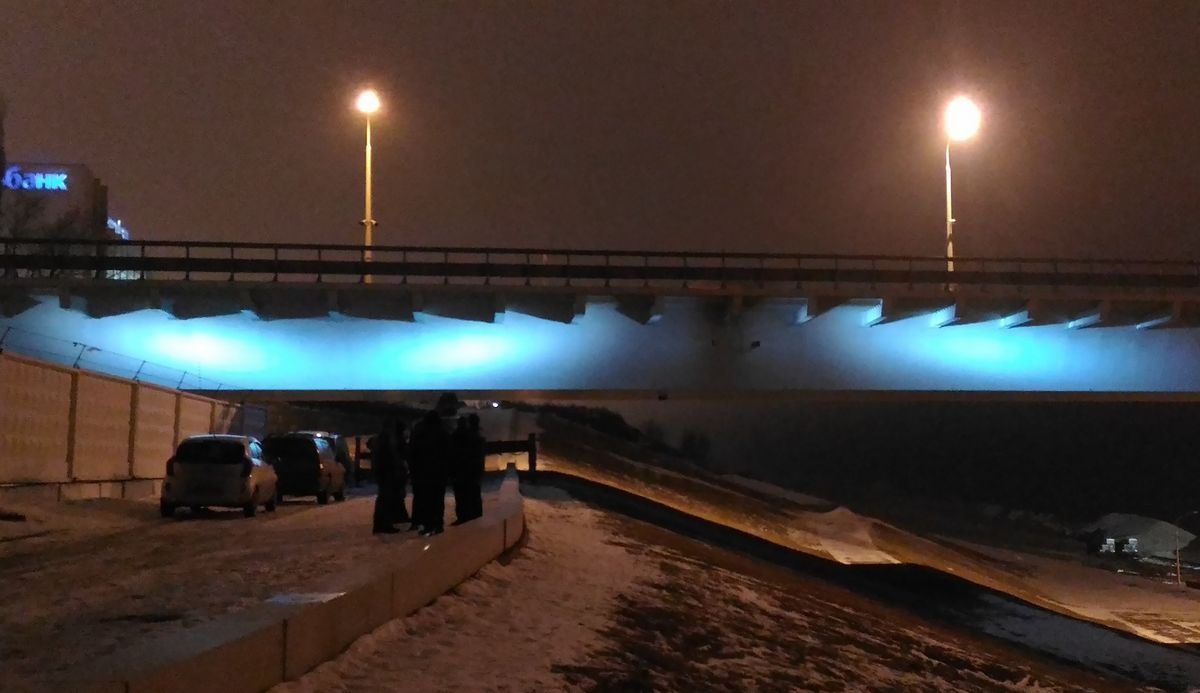
After revising the targeting scheme,
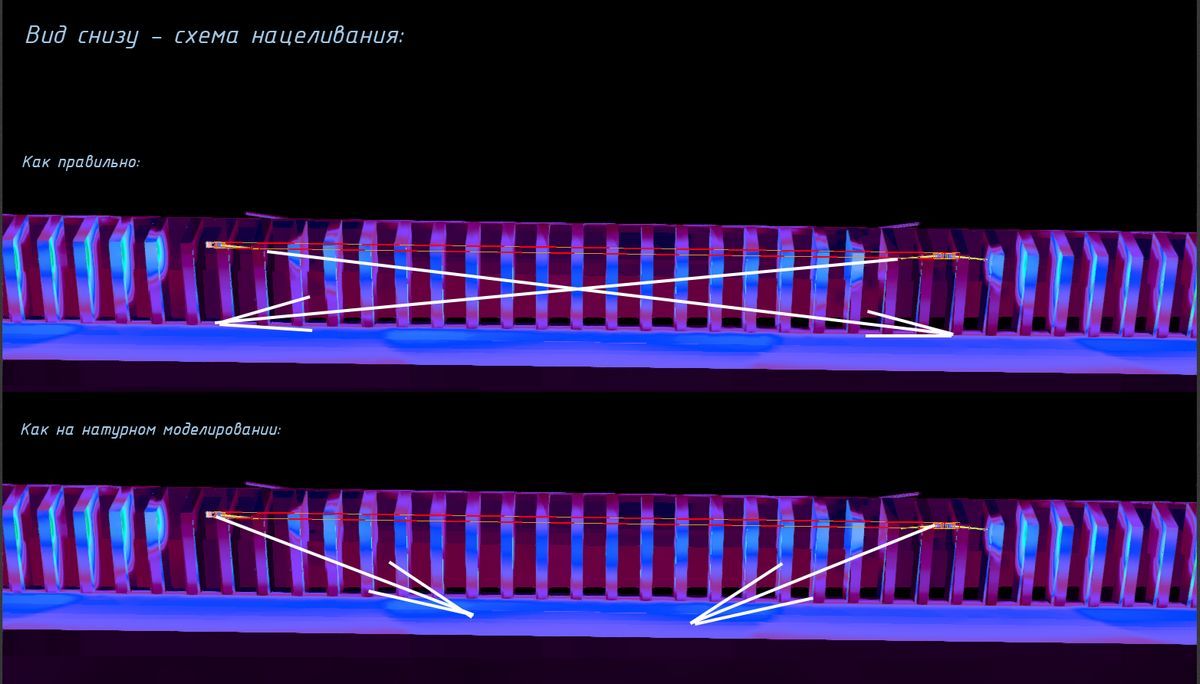
another full-scale modeling was carried out, and this time, the result corresponded to calculations, the illumination became uniform.
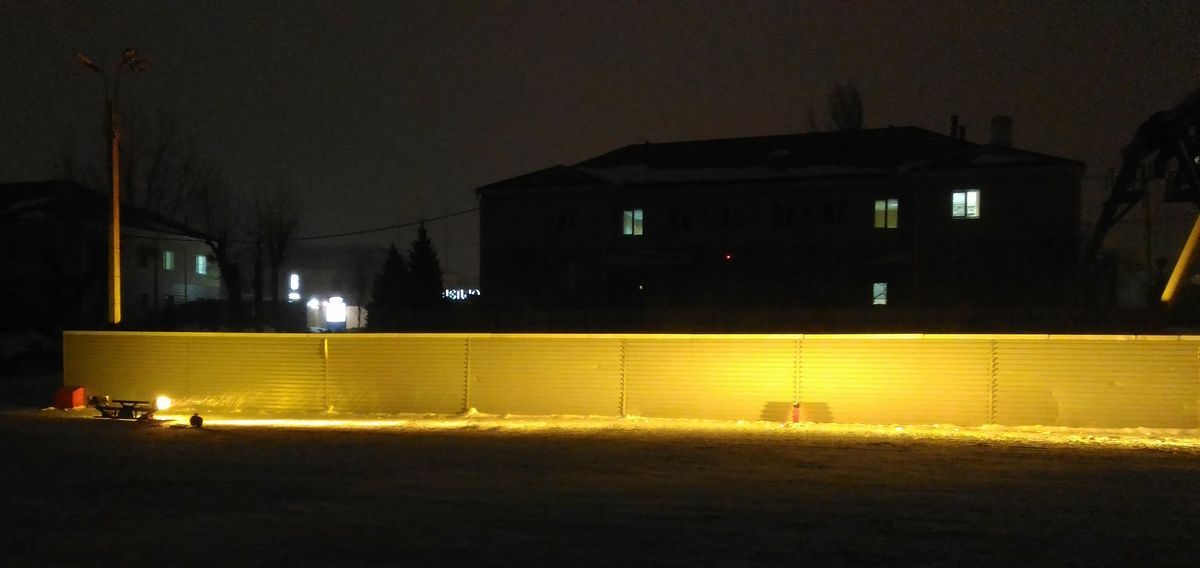
When drawing up the lighting scenario, we also encountered some features. Particularly, because of the cross targeting, each next luminaire beamed the installation area of the previous one. Therefore, it was decided to use colors similar in gamma within single chatoyancy and to set the rate of effects that was not very fast but sufficient for two spotlights to glow with one color in one span. All luminaires are controlled by the DMX-512 protocol and are able both to create unique color-dynamic scenarios for festive events and to work in a static color mode. For example, one of the scenarios written simulates a wave moving and beating against the shore. When creating the illumination concept, the effect of light reflection from the water surface was taken into account.
Given the specifics of the structure, all lighting equipment is resistant to the effects of dynamic loads; the housings of spotlights are made of anti-corrosion materials.
As a result, we obtained inexpensive, beautiful, and uniform illumination for such a structure, when only 21 devices were installed per 150 m span,
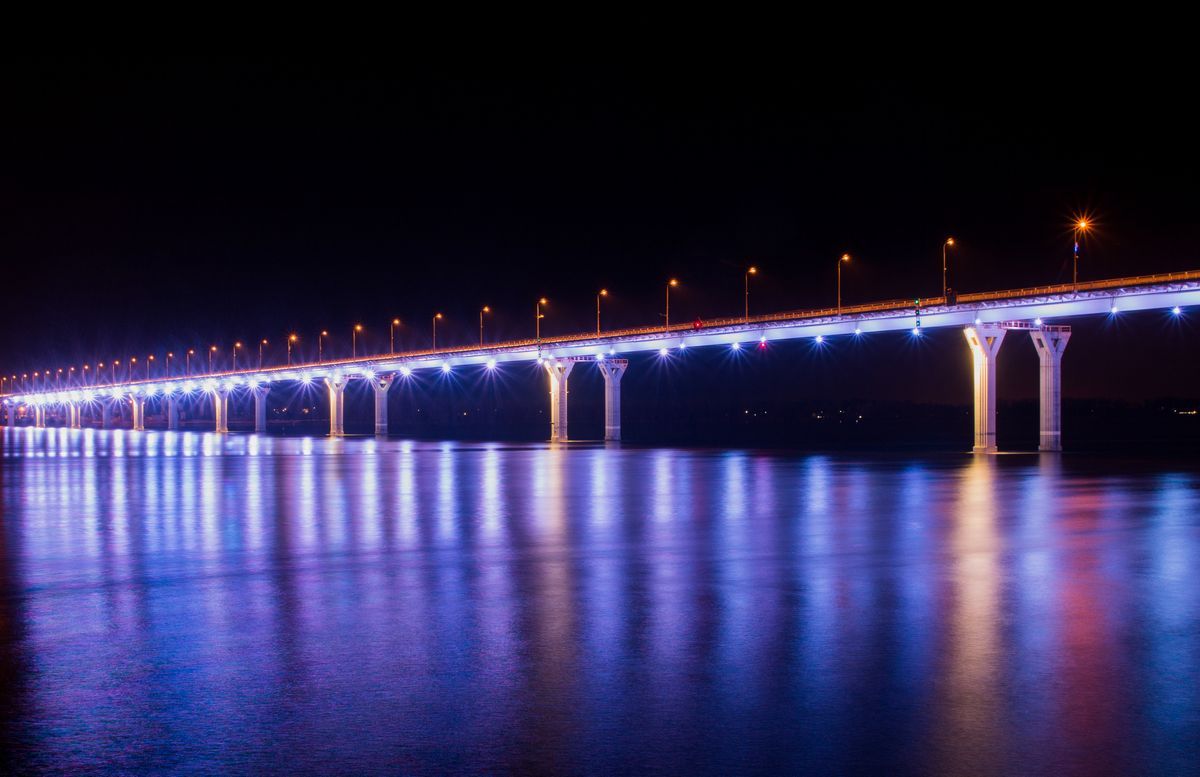
and the total power consumption was 39 kW.
The more restrictions there are in the project, the more complex the task, the more interesting to work. There were enough restrictions and difficulties in this project, however, three full-scale modeling tests, five calculations, and constant dialogue with the customer helped us avoid light burns, non-uniform illumination, and allowed us to stick to the budget.